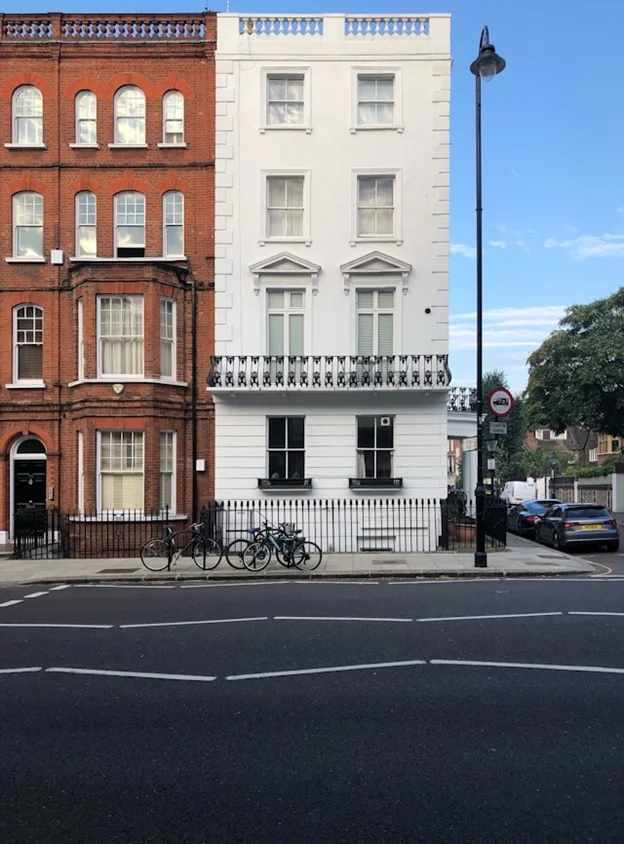Building conversions and extensions are a fantastic way to repurpose existing spaces, meet housing demands, and create unique properties. However, these projects come with their own set of regulations and challenges, especially regarding energy efficiency.
SAP rating, while often thought of as just an (annoying) regulatory hurdle, can actually be the unsung hero of sustainable construction that plays a crucial role in ensuring your conversion or extension not only complies with building regulations but also becomes a sought-after, energy-efficient dwelling.
What Makes Conversions and Extensions Different? Unique Challenges and Opportunities for Energy Efficiency
Conversions and extensions are a unique beast in the world of construction. Unlike new builds, where you have the freedom to design with energy efficiency in mind from the ground up, these projects involve working within the constraints of an existing building. This can present both challenges and exciting opportunities when it comes to meeting modern energy performance standards.
Challenges: Legacy of Inefficiency
Older buildings often carry a legacy of inefficiency. Many were constructed at a time when energy costs were low and environmental concerns weren’t as prominent. This means they often have:
- Poor Insulation: Walls, roofs, and floors may lack sufficient insulation or have outdated materials that don’t meet current standards.
- Draughty Windows and Doors: Single-glazed windows, ill-fitting frames, and gaps around doors can lead to significant heat loss and drafts.
- Outdated Heating Systems: Older boilers or heating systems may be inefficient, burning more fuel than necessary to maintain a comfortable temperature.
- Limited Space for Upgrades: Adding insulation or upgrading systems can be challenging in existing buildings due to space constraints or the need to preserve historic features.
Opportunities: A Chance for a Stunning Transformation
While these challenges are real, they also present an opportunity to make a significant impact. A well-planned conversion or extension can:
- Breathe New Life into Old Buildings: By addressing energy efficiency issues, you can transform an old, draughty building into a comfortable, modern, and sustainable living space.
- Unlock Hidden Potential: Even buildings with poor existing performance can be dramatically improved through strategic upgrades and energy-saving measures.
- Showcase Innovation: Conversions and extensions are a chance to showcase innovative solutions, from smart home technologies to renewable energy integration.
- Increase Property Value: Energy-efficient renovations can significantly increase the value of a property, making it more attractive to buyers and renters.
The SAP Rating Advantage
This is where SAP calculations come in. By modelling the existing building’s performance and comparing it to the proposed changes, you can:
- Identify Opportunities for Improvement: Pinpoint the areas where energy is being wasted and determine the most cost-effective ways to improve insulation, heating, ventilation, and lighting.
- Comply with Regulations: Ensure your conversion or extension meets the energy efficiency requirements of Part L1B of the Building Regulations, avoiding costly delays and legal issues.
- Maximise Energy Savings: Make informed decisions about upgrades that will deliver the greatest return on investment in terms of reduced energy bills.
- Create a More Sustainable Building: By prioritising energy efficiency, you can reduce your carbon footprint and contribute to a more sustainable future.
Remember, a successful conversion or extension isn’t just about aesthetics; it’s about creating a functional, comfortable, and energy-efficient space that meets the needs of modern living while respecting the building’s existing character.
Part L1B: The Regulatory Framework for Conversions and Extensions
Part L1B of the Building Regulations specifically addresses energy efficiency requirements for these types of projects. It sets standards for insulation, glazing, ventilation, heating, and other elements that impact energy performance.
To demonstrate compliance, you’ll need to provide a SAP (Standard Assessment Procedure) calculation and an accompanying Energy Performance Certificate (EPC).
SAP Calculations: Your Compass for Compliance
SAP calculations for conversions and extensions are similar to those for new builds, but with a few key differences. The assessment considers:
- Existing Building Fabric: The assessor will evaluate the thermal performance of the existing walls, roof, and floors, taking into account any existing insulation, windows, and doors.
- Proposed Changes: The assessment will model the impact of your proposed changes, such as adding new insulation, replacing windows, or installing a more efficient heating system.
- Impact on Overall Energy Performance: The calculations will show how your proposed changes will affect the overall energy performance of the converted or extended dwelling, ensuring it meets or exceeds the minimum standards set by Part L1B.
Why SAP Ratings Matter for Conversions and Extensions
- Legal Compliance: As mentioned earlier, SAP calculations and a compliant EPC are mandatory for most conversions and extensions. Failure to meet these requirements can lead to delays, fines, and potential legal issues.
- Cost Savings: By optimising energy efficiency through SAP calculations, you can significantly reduce the running costs of the converted or extended dwelling. This can make the property more attractive to buyers or tenants and enhance its long-term value.
- Environmental Benefits: Improving the energy performance of existing buildings is a crucial step towards reducing carbon emissions and creating a more sustainable built environment. SAP calculations can help you identify the most effective strategies for minimising energy waste and promoting sustainable practices.
- Comfort and Well-being: A well-insulated and energy-efficient home is not only cheaper to run but also more comfortable and healthier for occupants. SAP calculations can help you create a more pleasant living environment with consistent temperatures, good ventilation, and reduced noise levels.
Challenges and Opportunities in Conversions and Extensions
While SAP calculations are essential for conversions and extensions, they can present some unique challenges:
- Limited Space: Older buildings may have limited space for adding insulation or upgrading certain systems. However, a skilled SAP assessor can help you find creative solutions and identify the most impactful improvements within your constraints.
- Balancing Historic Features: For listed buildings or those in conservation areas, preserving historical features while improving energy efficiency can be a tough balancing act. SAP calculations can help you find solutions that respect the building’s heritage while still meeting modern standards.
Despite these challenges, conversions and extensions offer exciting opportunities to breathe new life into existing buildings and create unique, energy-efficient homes. By working with a qualified SAP assessor like Focus360, you can navigate the regulatory landscape, overcome challenges, and unlock the full potential of your project.
Beyond SAP: A Holistic Approach to Building Performance
Focus360 offers a range of services beyond SAP calculations to support your conversion or extension project:
- Air Tightness Testing: Ensure your building envelope is properly sealed to minimise heat loss and improve energy efficiency.
- Ventilation Assessments: Assess and optimise ventilation systems to ensure healthy indoor air quality and energy-efficient operation.
- Thermal Bridging Analysis: Identify and mitigate thermal bridges to prevent heat loss and improve the overall thermal performance of your building.
- Sound Insulation Testing: Ensure your conversion or extension meets acoustic requirements, creating a peaceful and comfortable living environment.
Building Better Conversions and Extensions: A Sustainable Path Forward
SAP calculations are a crucial tool for builders and developers undertaking conversion or extension projects in the UK. By understanding their importance, complying with regulations, and optimising energy performance, you can create high-quality, sustainable, and desirable properties that meet the needs of modern homeowners while contributing to a greener future.
Don’t underestimate the impact of SAP calculations on your next conversion or extension project. Partner with a qualified assessor to unlock the full potential of your building and ensure its success for years to come.
For more information click here.









